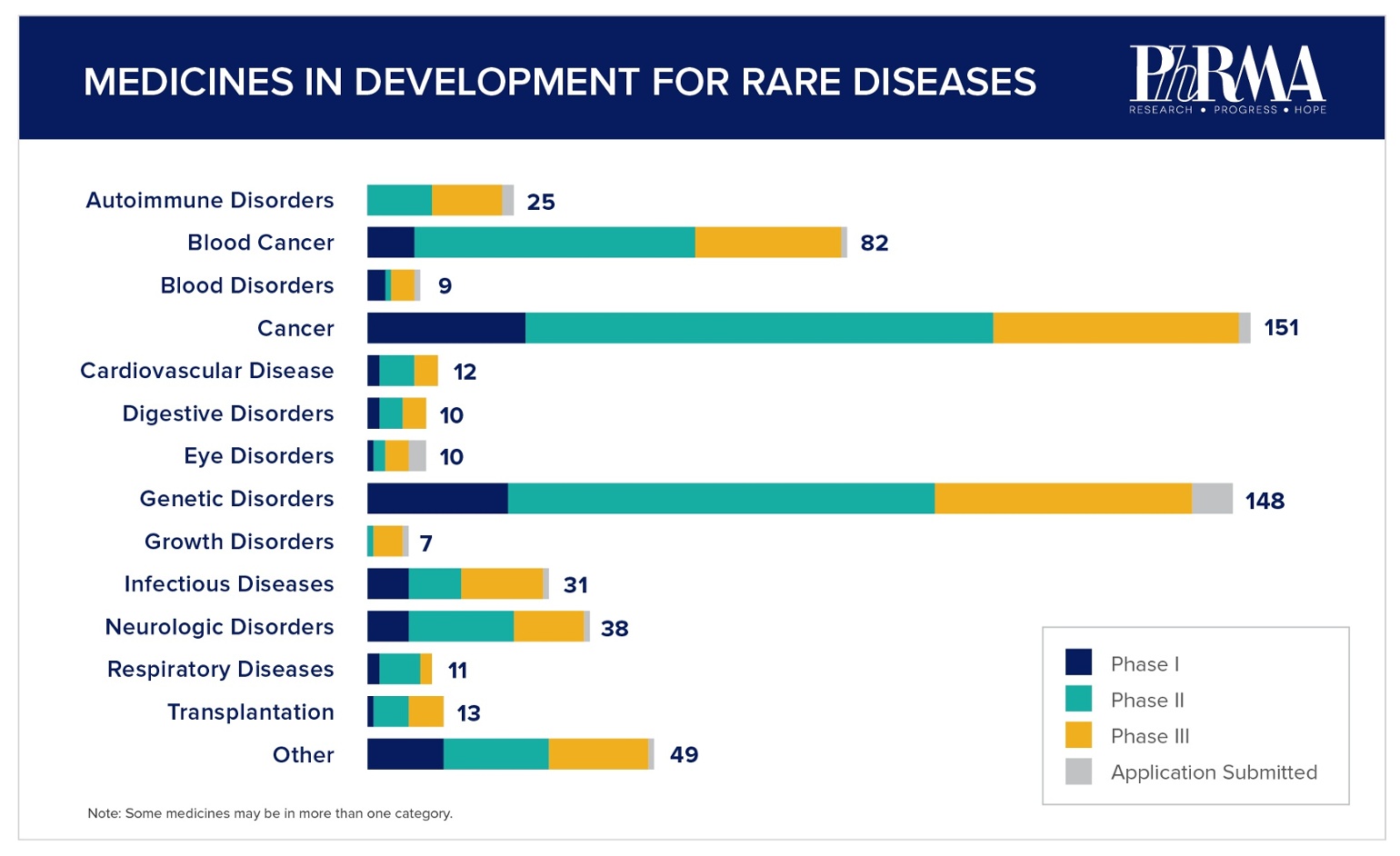Today is Rare Disease Day, which serves as a time to recognize the more than 30 million Americans living with some type of rare disease. These diseases can be acute or chronic in nature and are generally defined as affecting fewer than 200,000 people in the United States. They include certain types of cancers, autoimmune disorders, digestive disorders, infectious diseases, neurological disorders and many other types of illness.
Although biopharmaceutical researchers have made tremendous progress in advancing innovation for rare diseases, 95 percent of rare diseases still do not have any treatment options, representing a significant unmet need for patients. America’s biopharmaceutical companies are committed to developing new medicines for patients with rare diseases, and because of their dedication, the pipeline of new medicines has never been more promising. The following numbers help paint a picture of this challenging but hopeful research landscape.
7,000: The number of different rare diseases that exist today. While more than 7,000 rare diseases have been identified, only 5 percent have treatments. As the majority of these diseases are life threatening, these facts underscore the need for new medicines. That’s why America’s biopharmaceutical researchers have worked tirelessly to leverage new technologies and the growing scientific understanding of many rare diseases to develop groundbreaking therapies in recent years.
More than 600: The number of orphan drugs approved by the FDA since the passage of the Orphan Drug Act in 1983, compared with fewer than 10 in the decade prior. Unprecedented scientific innovation makes this a promising time for many patients with rare diseases.
80 percent: The proportion of rare diseases that are genetic in origin. Progress in understanding some of these diseases at the molecular and genomic level is helping to make new advances possible, but for many rare diseases the causes remain elusive. Conquering rare diseases presents a variety of unique challenges for scientists and researchers, who are nevertheless dedicated to find effective treatments.
560: The number of medicines in clinical development for the treatment of rare diseases.

